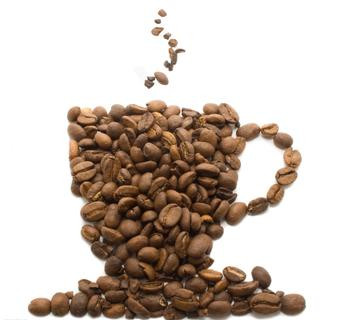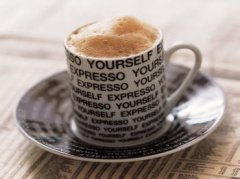Only when you understand coffee culture can you taste good coffee.

Drink black coffee without sugar and milk
It's a huge change.
Three waves of Coffee Revolution
The first wave of coffee arose from instant coffee, and the Chinese coffee journey began in the sweet taste of cream companions.
The second wave of coffee is the rise of the chain coffee market, followed by the emergence of small cafes with different styles. Most of the second wave of cafes sell concepts and the environment, while ignoring the quality of coffee itself. All kinds of fancy coffee cover up the taste of coffee itself.
The third wave of the Coffee Revolution, a group of advocates who really love boutique coffee, began to offer single coffee (single producing area / but to manor / single variety), using self-baked coffee beans, roasting degree also changed to medium-light roasting. They insist on providing boutique coffee, spread authentic coffee culture, have exclusive cultural meaning, provide coffee directly from the country of origin, and its exclusive culture and technology, in order to bring coffee back to its true quality.
Boutique coffee Specialty Coffee
It was first proposed by Ms. Erna Knudsen, who is known as the "godmother of boutique coffee," in the Tea and Coffee monthly in 1974, highlighting that "only in the most favorable microclimate and soil and water can boutique coffee with unique flavor be cultivated." the aim is to distinguish it from the bulk commercial coffee on the New York Futures Exchange. In 1972, Ms. Knudsen and Donner. Xiao Huo and six others co-founded the American Fine Coffee Association (SCAA), and the word "specialty coffee" became a global term.
SCAA's definition of the concept of fine coffee:
Carefully select the most suitable variety and plant it in the altitude, climate, soil and water environment that is most conducive to the development of coffee flavor.
Careful washing and sun processing, select the most advanced raw beans without defects, and deliver them to customers with zero defects in the transportation process.
After the baker's superb craftsmanship, it leads to the richest flavor of the region.
And then in the recognized way of extraction, make delicious coffee.
The regional flavor, that is, the difference between soil, variety, climate and soil and water, creates different coffee flavor, which is the soul of coffee in high-quality producing areas. In short, boutique coffee should be a high-quality coffee with "good raw beans, good roasting and good extraction".
Commercial beans and fine beans
Today, 70% of the coffee beans produced in the world are Arabica Arabica, divided into Picard, Bourbon, and 30% are Robster Robusta. The overall quality of Arabica is higher than that of Robster, but Arabica's disease resistance is weak, so the proportion of Arabica in the consumer market is much smaller than that of Robsta. And not all Arabica beans can make boutique coffee, which has to be scored by strict cup tests.
The American Fine Coffee Association points out that through the comprehensive cup test (blind test), those with a score of more than 80 can be defined as boutique coffee beans. Blind test score less than 80, can be classified as commercial beans, packaging and transportation process is long, freshness can not be guaranteed.
However, this standard only applies to washed Arabica coffee and is not comprehensive, so now "boutique beans" are usually understood as single beans with high quality and proper handling, which can be traced back to the origin of the variety and have a unique flavor.
Well-known individual coffee
Blue Mountain: produced in the high mountains of Jamaica, coffee treasures, taste sweet and soft, not bitter but slightly sweet, very little production, expensive.
Mocha: produced in Ethiopia, small beans, strong sour, slightly alcoholic, spicy, special flavor, is a famous high-quality coffee.
Yega Chuefei: from Ethiopia, with strong aromas of jasmine, lemon or lime acid, and sweet or tea aromas of peaches and almonds.
Crystal Mountain of Cuba: adjacent to the Blue Mountains of Jamaica, the fragrance is soft, the concentration is moderate, and there is almost no acid taste.
Manning: produced in Sumatra, with strong aroma, bitter taste, syrup and chocolate taste, not sour taste.
Panamanian rose: the brightest, richest and most strongly fragrant coffee variety, with rich aromas ranging from berries and citrus to mango, papaya and peach.
Baking should be scientific.
80% of the taste of coffee depends on roasting, and roasting must have the rigor of scientists, which can skillfully bake out the aroma, sour taste and bitterness of raw coffee beans, ensuring the carbonization of sugar and carbohydrates in coffee during roasting, thus producing coffee oil, showing the greatest characteristics of coffee. Good baked beans are greatly expanded, the surface is wrinkle-free and the luster is symmetrical.
Baking degree:
Can be divided into light, medium and deep three categories, light baking acidity is strong, deep baking acidity is gradually lost, bitterness is aggravated. Now boutique coffee is more light to moderate roasting to show the taste of the coffee bean itself.
After baking:
Freshly roasted coffee beans need to exhaust, release carbon dioxide, 36 hours before production, about 4 days to reach the highest flavor, surrounded by the limit, shallow roasted coffee beans can be extended for a week, deep-roasted coffee beans can be drunk within 10 days, and can be thrown away in more than three weeks.
Exclusive exposure of hand-drawn step map of hand-made coffee
Making coffee by hand is a ritual.
Slowly drip filtration
The rich and light taste of extracted coffee
The greatest charm of hand flushing
It is also because it is full of uncertainties.
……
Necessary tools
| | filter cup: the filter cup has single hole, double control, three hole and multi-hole. The more holes the filter cup has, the higher the flushing skill is required. |
| filter paper: coffee beans are of higher quality and cleanliness. In order to highlight the flavor, filter screen or filter paper is the best choice.
| | hand punch pot: a small mouth pot, which is convenient to control water flow and direction. |
| hand-made pot: choose as you like.
Hand flush Tips
| | ratio of water beans: generally speaking, 200ml coffee requires about 15-20g coffee beans. |
| | filter cup heating: pour hot water into the filter cup before brewing coffee, wet the filter paper to remove the smell of the filter paper, and heat the filter cup and the coffee cup. |
| steaming: take the center of the coffee powder as the center, gently add water to the coffee powder by hand to draw a circle, and submerge the coffee powder for about 20-25 seconds. The water flow here is too fine.
| the first brewing water injection accounts for 60% of the total coffee water, the second water injection accounts for 30%, and the third water injection accounts for 10%.
Extraction completed
Enjoy
Important Notice :
前街咖啡 FrontStreet Coffee has moved to new addredd:
FrontStreet Coffee Address: 315,Donghua East Road,GuangZhou
Tel:020 38364473
- Prev

How to choose coffee packaging and the influence of packaging on coffee
When the baking is finished, the coffee will be ready to use. It is important to pack it as soon as possible to avoid the loss of aroma and keep it fresh. After contact with the air, the water and oxygen in the air accelerate the oxidation process, making the quality of coffee worse. Factors affecting packaging Packaging is an important and careful process, which can protect coffee from the following factors: 1. Environment: coffee will change when in contact with air.
- Next

The advanced taste of coffee for the first time will teach you how to taste coffee.
When you are in trouble, go to a coffee shop when you are in trouble of one kind or another. (Peter Altenberg 1922) the way to make afternoon tea taste better is not only to find a better coffee shop, but also to make yourself more coffee-savvy. Of course, the process from picking a bag of real boutique coffee beans to making coffee by yourself is a bit by bit.
Related
- Detailed explanation of Jadeite planting Land in Panamanian Jadeite Manor introduction to the grading system of Jadeite competitive bidding, Red bid, Green bid and Rose Summer
- Story of Coffee planting in Brenka region of Costa Rica Stonehenge Manor anaerobic heavy honey treatment of flavor mouth
- What's on the barrel of Blue Mountain Coffee beans?
- Can American coffee also pull flowers? How to use hot American style to pull out a good-looking pattern?
- Can you make a cold extract with coffee beans? What is the right proportion for cold-extracted coffee formula?
- Indonesian PWN Gold Mandrine Coffee Origin Features Flavor How to Chong? Mandolin coffee is American.
- A brief introduction to the flavor characteristics of Brazilian yellow bourbon coffee beans
- What is the effect of different water quality on the flavor of cold-extracted coffee? What kind of water is best for brewing coffee?
- Why do you think of Rose Summer whenever you mention Panamanian coffee?
- Introduction to the characteristics of authentic blue mountain coffee bean producing areas? What is the CIB Coffee Authority in Jamaica?

